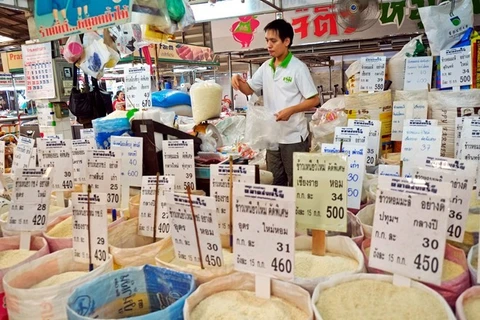Bangkok (VNA) – The export of Thailand’s canned tuna is expected to miss its target as the country’s currency, baht, is getting stronger, said the Thai Tuna Industry Association on July 10.
The strengthening local currency also reduced competitiveness of Thai aquatic products, experts warned.
Apart from the baht appreciation, rising production cost also weighed heavily on the tuna business, making it hard for the industry to reach the target of 80 billion THB in tuna export value this year, they added.
Experts also noted that weak global oil price cut the incomes of Middle East countries, thus curtailing their purchasing power.
Middle East is the biggest market of Thai tuna, making up 40 percent, followed by the United State at 20 percent; Australia 10 percent, while the European Union, Japan and Canada’s combined share stand around 30 percent.
To survive in the long term, Thai tuna producers should shift to other products with higher value to up their profit. Experts also suggest diversifying markets to reduce reliance on the Middle East market. The new potential markets are South Africa, Latin American and Asia.
Accordingly, export associations of the Southeast Asia country have urged action from the government and the Bank of Thailand to stabilise the local currency to support exports which accounts for 60 percent of the country’s gross domestic product (GDP).
However, total Thai exports in May surpassed expectations with the value increasing by 13.2 percent to 676 billion THB (19.9 billion USD), the highest in the last four years because of the strengthening local currency. -VNA
The strengthening local currency also reduced competitiveness of Thai aquatic products, experts warned.
Apart from the baht appreciation, rising production cost also weighed heavily on the tuna business, making it hard for the industry to reach the target of 80 billion THB in tuna export value this year, they added.
Experts also noted that weak global oil price cut the incomes of Middle East countries, thus curtailing their purchasing power.
Middle East is the biggest market of Thai tuna, making up 40 percent, followed by the United State at 20 percent; Australia 10 percent, while the European Union, Japan and Canada’s combined share stand around 30 percent.
To survive in the long term, Thai tuna producers should shift to other products with higher value to up their profit. Experts also suggest diversifying markets to reduce reliance on the Middle East market. The new potential markets are South Africa, Latin American and Asia.
Accordingly, export associations of the Southeast Asia country have urged action from the government and the Bank of Thailand to stabilise the local currency to support exports which accounts for 60 percent of the country’s gross domestic product (GDP).
However, total Thai exports in May surpassed expectations with the value increasing by 13.2 percent to 676 billion THB (19.9 billion USD), the highest in the last four years because of the strengthening local currency. -VNA
VNA























